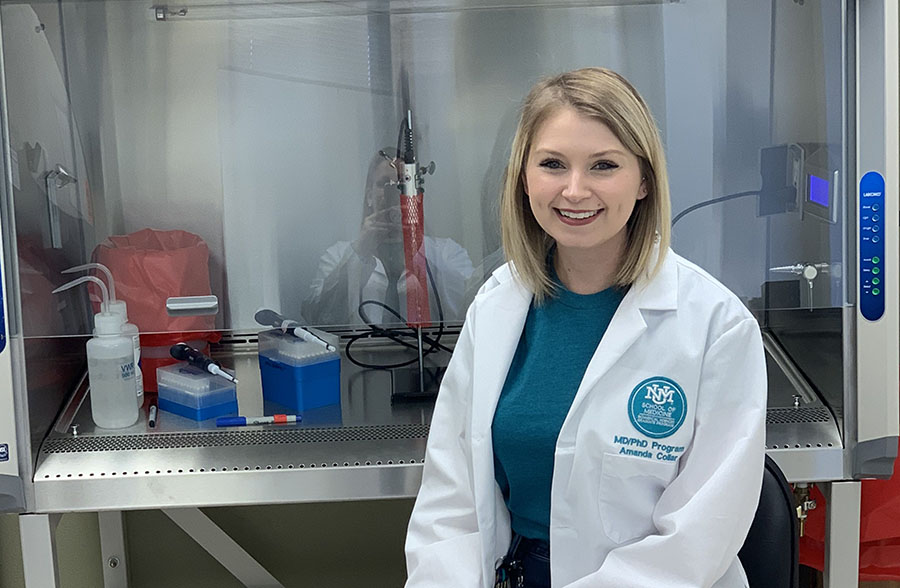Preparing for Disaster: UNM Hospital Participates in Region-Wide Emergency Training

Word of Caution
UNM Researchers Urge Safe Practice in the Use of Sexual Enrichment Aids
University of New Mexico graduate student Amanda Collar was developing a potential vaccine for chlamydia when she attended a scientific conference where she first learned that there was a market for used sex toys.
I was concerned about the possibility of transmitting sexually transmitted infections via this route
“I was concerned about the possibility of transmitting sexually transmitted infections via this route,” says Collar, an MD/PhD student in the UNM School of Medicine. “I started looking into it and there wasn’t much literature on whether sex toys could be fomites.”
Fomites are surfaces that can carry viruses or bacteria. There had been little research into whether sex toys could spread chlamydia and other infections – and, Collar found, not much was known about how widespread their use was.
As a first step, Collar and her mentor, Kathryn Frietze, PhD, assistant professor in the Department of Molecular Genetics & Microbiology, launched a study of women’s use of SEAs – sexual enrichment aids (the scholarly euphemism for sex toys) – summarized in a newly published paper in the Journal of Sex Research.

This is a good example of the sort of collaborative work that can happen at the CTSC and using CTSC resources
They used social media to recruit nearly 800 women ages 18-35 from around the world to participate in an online survey. In a second round of the study, 24 women took part in semi-structured interviews.
Nearly 80 percent of the participants reported using sex toys, a higher percentage than previously reported, the study found. “Most of the research that was available was at least a decade old,” Collar says, adding that finding participants online wasn’t difficult.
“There are just fewer taboos around these sorts of things now,” she says. “We hypothesized that the prevalence would be higher now because of sex positivity and because they’re so readily available. You can order them anonymously on Amazon now.”
The researchers identified three cohorts – women who have sex with men, women who have sex with women and women who have sex with men and women – and found differences in the frequency with which the devices were used.
Study participants were also asked about the material used to manufacture their SEAs. Silicone was the most common reported material, but many people were unsure of what they were made from. The devices do not require FDA approval in most cases.
“Sex toys are made out of a lot of different materials with different porosities,” Collar says. “Some are more porous and more difficult to clean. It’s possible that pathogens could get down in those holes and it would be harder to get them off.”
According to the paper, there was evidence that some women shared their SEAs with others, and nearly 82% reported cleaning them regularly with soap and water. “Together, our findings support the need for increased evidence-based education for women to increase safety and hygiene of SEA use,” the authors wrote.
The research was conducted with the help of a pilot grant from the UNM Clinical & Translational Science Center (CTSC), with contributions by Jesus Fuentes and Heidi Rishel Brakey from the CTSC’s Community Engagement & Research Core.
“This is a good example of the sort of collaborative work that can happen at the CTSC and using CTSC resources,” Frietze says.